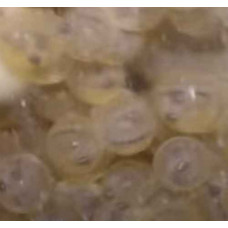The outward sign of egg development is the accumulation of plasma at the animal pole and the formation of the blastodisc.
Development proceeds according to a pattern: blastodiscus fragmentation (with the formation of first a large-cell and then a small-cell morula); appearance of the blastula, within which there is a primary body cavity, the blastocell; as a result of continued cell multiplication, gastrulation occurs, during which the cells of the anima pole are thrust onto the yolk (yolk encrustation) and two germinal plates (ecto and entoderm) are formed; the gastrula cavity is the primary intestinal cavity. A third (mesoderm) is then formed between the two embryonic plates; a secondary body cavity, or whole, develops within the mesoderm.
Then germinal leaves differentiate into the rudiments of tissues and organs: from ectoderm covers are formed (epidermis), nervous system, from entoderm - intestines and related organs, from mesoderm - internal skeleton, muscles, connective tissue layer of skin, aorta and cardinal veins, cardiac endocardium, etc.
The embryonic period of fish development does not end with the embryo leaving the shell. It continues for some time after hatching until the prolarva, or free embryo, still possessing a number of embryonic features of the respiratory, circulatory, digestive and other systems, goes through the final stages of embryonic development. Once the gill, digestive and other systems begin to function, the activities of the embryonic organs cease and the period of embryonic development ends accordingly.
Larvae hatching
Tags: Larvae hatching



